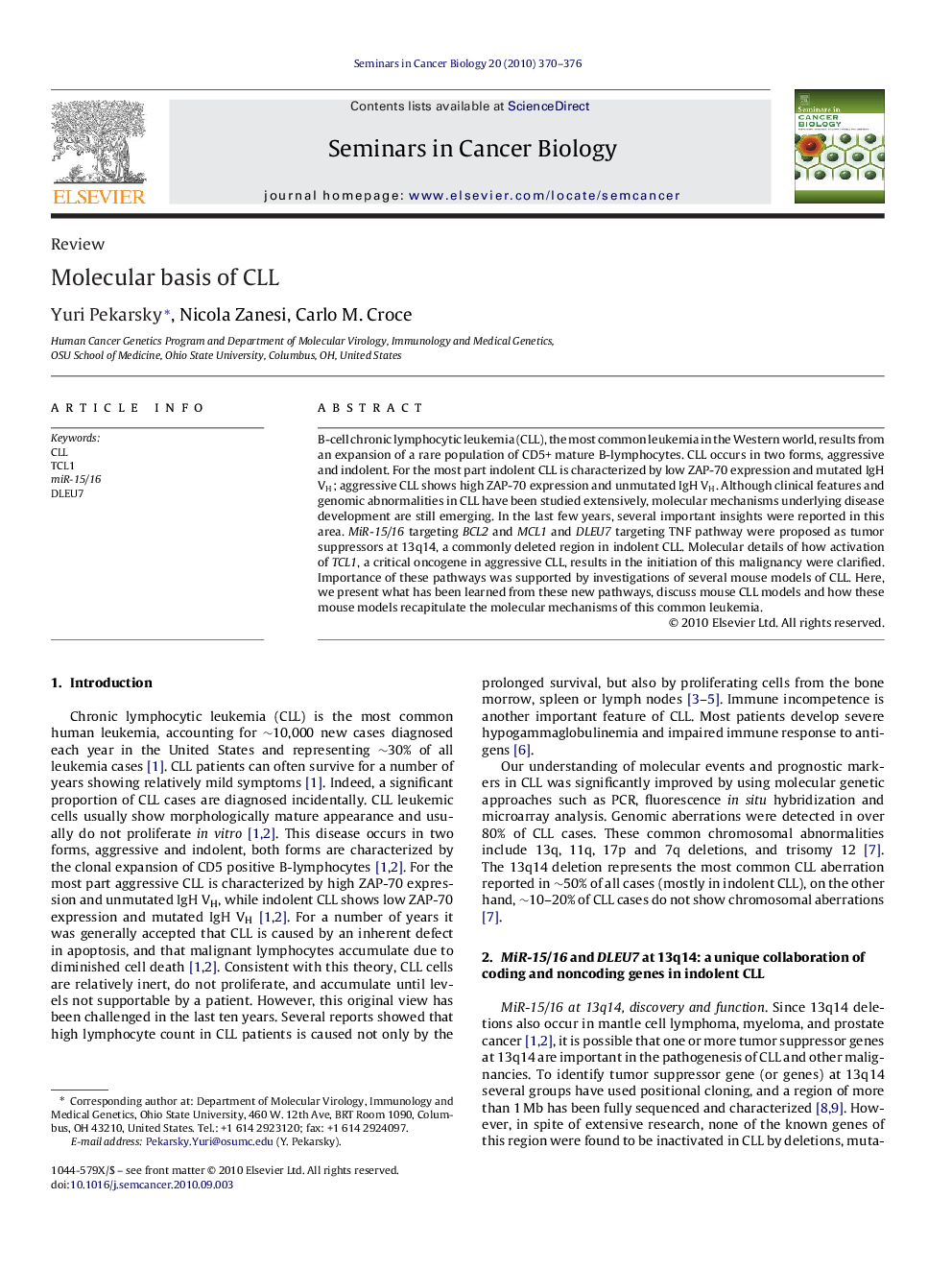| Article ID | Journal | Published Year | Pages | File Type |
|---|---|---|---|---|
| 2023862 | Seminars in Cancer Biology | 2010 | 7 Pages |
B-cell chronic lymphocytic leukemia (CLL), the most common leukemia in the Western world, results from an expansion of a rare population of CD5+ mature B-lymphocytes. CLL occurs in two forms, aggressive and indolent. For the most part indolent CLL is characterized by low ZAP-70 expression and mutated IgH VH; aggressive CLL shows high ZAP-70 expression and unmutated IgH VH. Although clinical features and genomic abnormalities in CLL have been studied extensively, molecular mechanisms underlying disease development are still emerging. In the last few years, several important insights were reported in this area. MiR-15/16 targeting BCL2 and MCL1 and DLEU7 targeting TNF pathway were proposed as tumor suppressors at 13q14, a commonly deleted region in indolent CLL. Molecular details of how activation of TCL1, a critical oncogene in aggressive CLL, results in the initiation of this malignancy were clarified. Importance of these pathways was supported by investigations of several mouse models of CLL. Here, we present what has been learned from these new pathways, discuss mouse CLL models and how these mouse models recapitulate the molecular mechanisms of this common leukemia.
